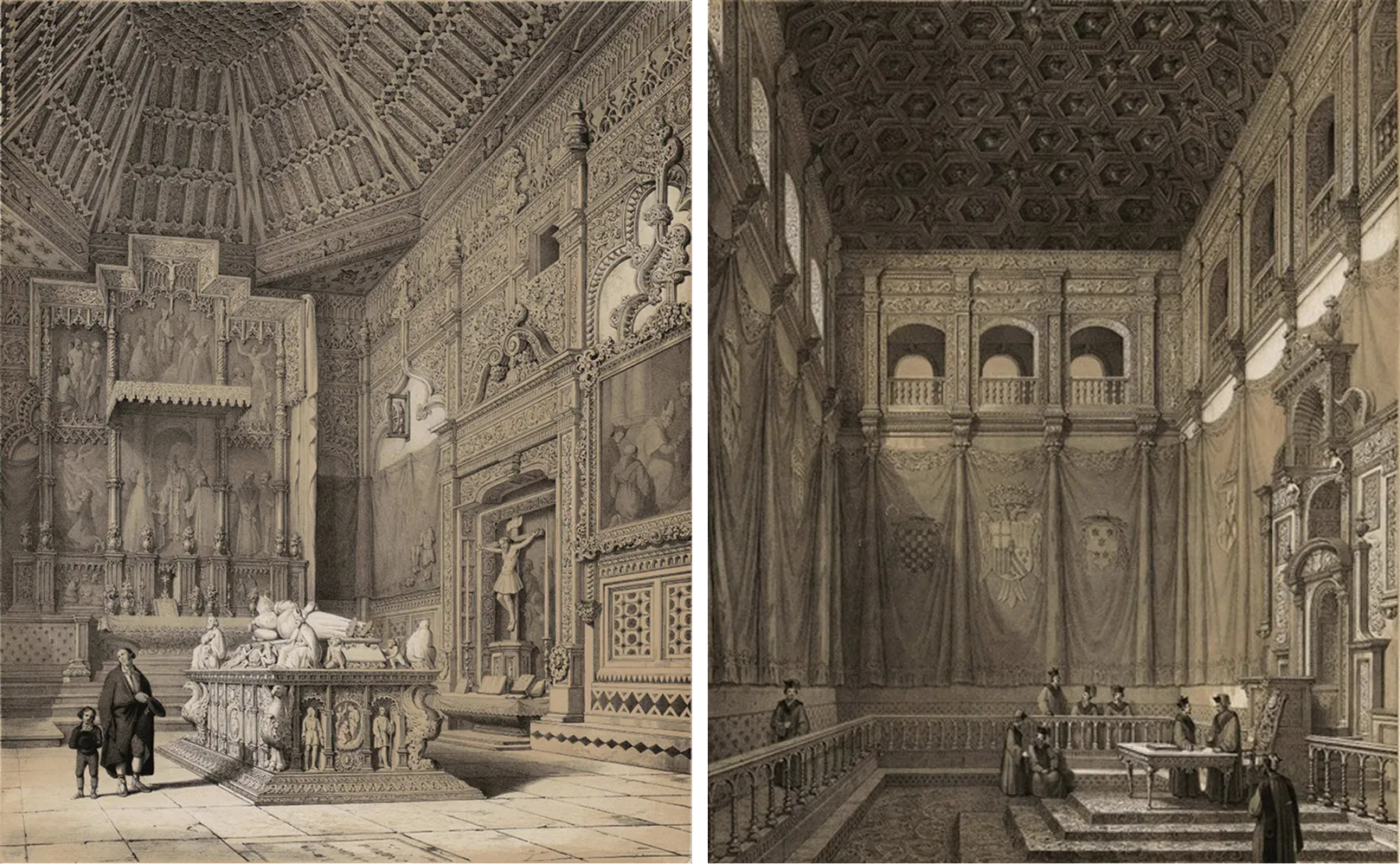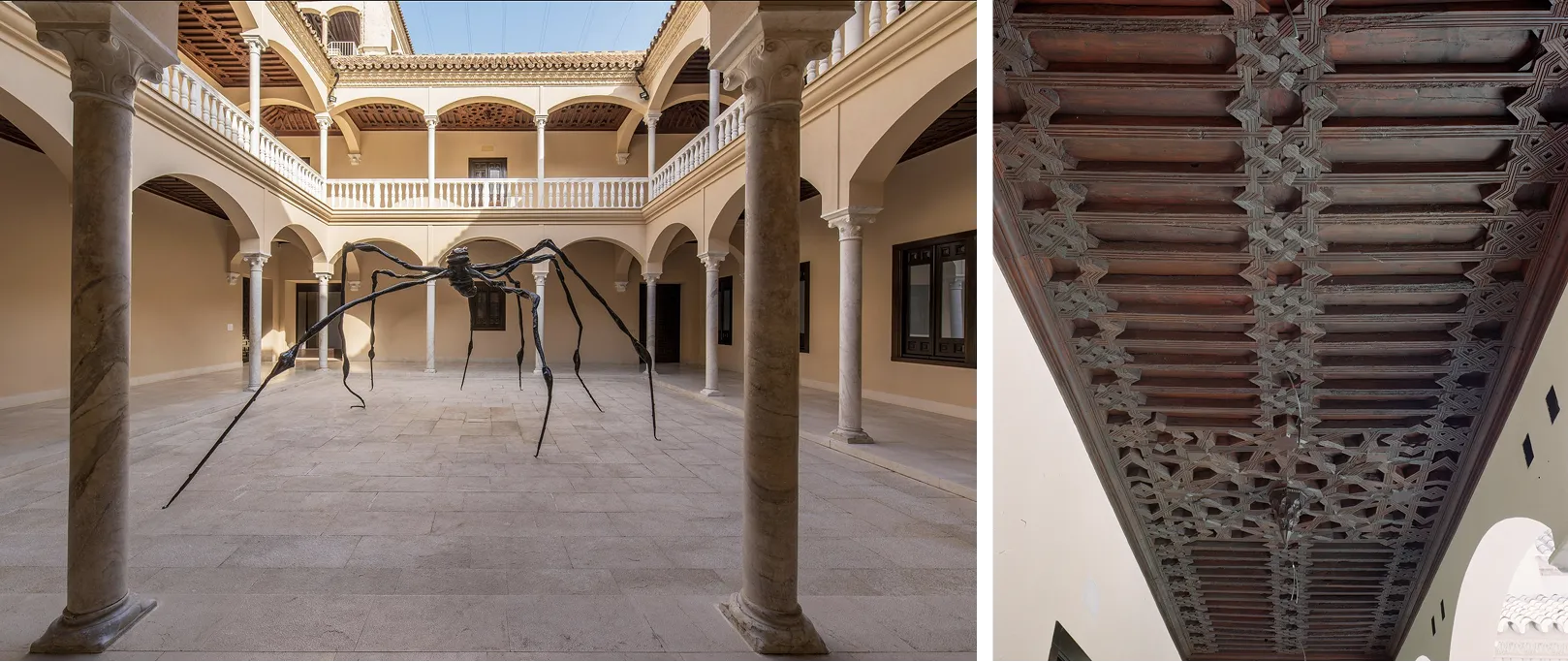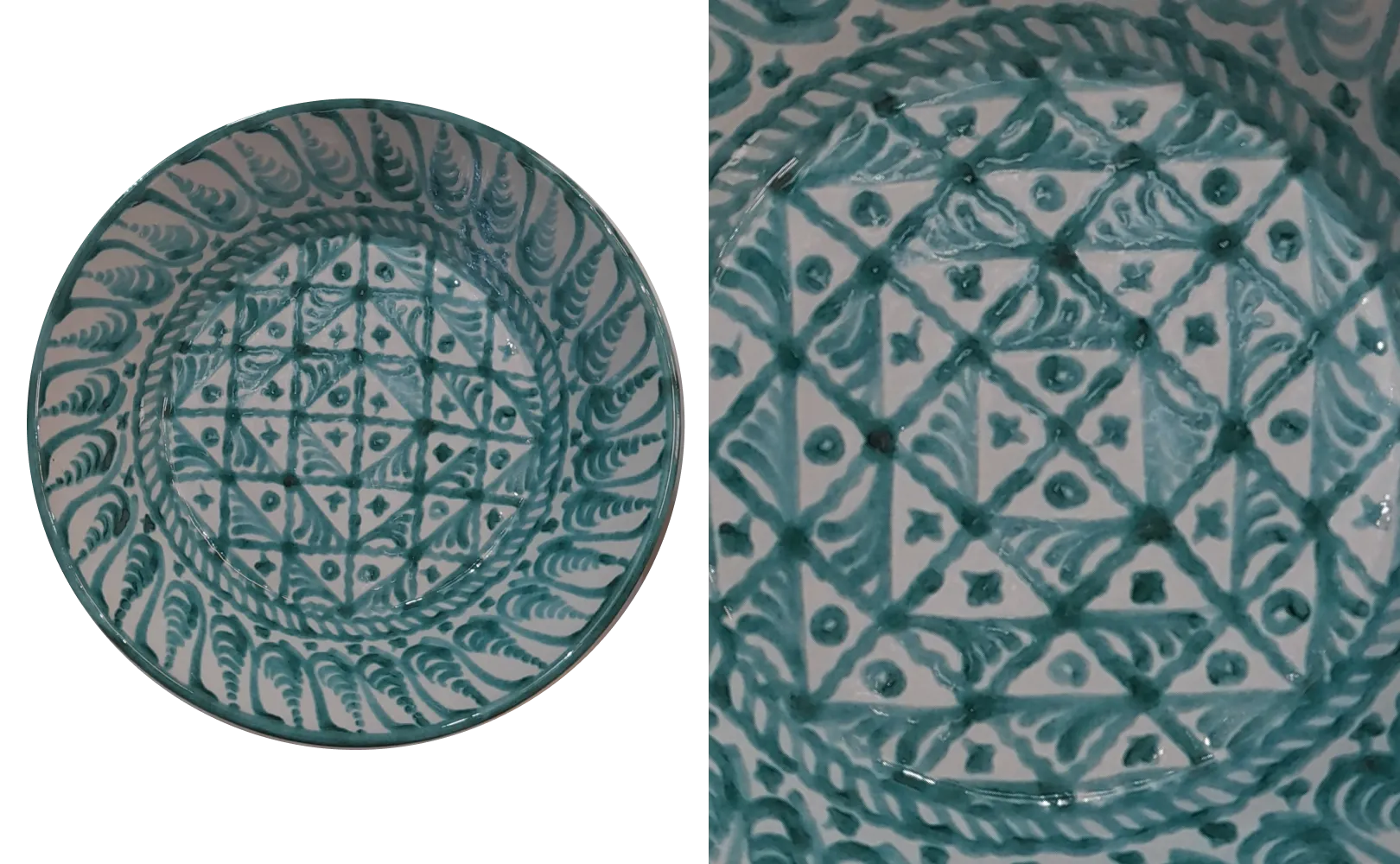While some Moorish ceilings are made of simple flat beams, others are coffered with sunken panels housing elaborate hand-carved wooden shapes. Looking up the ceiling as if to the heavens, Nasrid artists made a variety of geometrically correct star-shaped carvings to decorate these structures. Other motifs were based on foliage and abstract compositions.
More elaborate ceilings featured double-hip rafters so that the raised roof gives the appearance of a dome as we see below in the artesonado from Alcalá de Henares.
And, if such complexity were not enough, the beams and carvings within the panels may be painted. Blue was a natural go-to color for the representation of the skies above. Twinkling stars and other carvings in red, orange or gold reflected the night sky.

A magnum opus of carpentry
Perhaps one the most striking artesonado ceilings in Spain is the roof in the Chapel of San Idelfonso of the University of Alcalá de Henares, 35 kilometers outside of the capital. The colorful palette highlights the breathtaking level of detail in the carvings, creating a visual delight. The double hip-rafted roof only makes the room look grander and the ceiling more celestial.
This artesonado is one of the magna opus of carpentry included in the 1842 tome of Spanish art and architecture España artística y monumental. The colorful interlaced wooden laths recall the intricate ceramic azulejo mosaics produced using this same lacería technique.
Built in 1499, just a few years after the Reconquista and before the final expulsion of the Muslim population, there would still have been a good number of artisans —painters, architects and carpenters who could build such a monument. Besides the expense and changing fashions, the loss of expert knowledge has left the trade in just a few hands. Today, a handful of master artisans lead major restoration projects and rare new builds for artesonados.
Restored in 1995, the Moorish ceiling in Alcalá de Henares is in formidable shape. We can see it in the photography that it has remained faithful to the 1842 drawing above. And, in color, it dazzles even more.
Stately monochrome artesonados
Few of these antique Moorish ceilings remain intact.
If you’ve had the chance to visit the Picasso Museum in Málaga, you’ve probably seen an artesonado. Housed in a 16th century building that sits on the ruins of a 15th century Nasrid palace, the museum boasts a few beautiful well-preserved Moorish ceilings in dark wood. The artesonados that run along the wraparound balcony of the courtyard were restored for the museum's grand opening in 2003.
A rare 15th century artesonado from Zaragoza was installed in this Mallorca home in the 1970s. The building has since been turned into the Sa Bassa Blanca Museum that attracts visitors both for its art exhibitions and architecture.
These two Moorish ceilings offer a subdued affair compared to the roof of the chapel in Alcalá de Henares. In dark wood, these coffered structures boast the same level of artistry but the decorative details rely fully on the carvings. With no color to distract the eye, every cut, every chisel has to be precise.

A mystical night sky in the Alhambra
The Nasrids who left this incredible heritage on the Iberian peninsula were a religious people who considered divine inspiration in their art and architecture. The design of the artesando ceilings certainly reflects a touch of mysticism.
We can see the Nasrid penchant for allusions to celestial beauty here on display in the Hall of Ambassadors in Comares Palace (Alhambra). Look at the visual effect of the star-shaped carvings. It’s as if we are looking at the night sky in a place far away from the city lights, perhaps the desert.
While time has rubbed away some of the colors, we know that this ceiling must have been a breathtaking sight. Notes scrawled on wooden blocks found in this room appear to be directions for the painters' palette: white, red, beige, light green.
Handmade in the last remaining stronghold of Nasrid power on the Iberian peninsula, the Artesonado lebrillo-style bowl is a nod to this architectural wonder. Rooted in Granada, our ceramic tradition carries on the same legacy. Our Fajalauza collection is crafted by artisans whose families have plied the ceramic trade for over 500 years.
The Artesonado Lebrillo Serving Bowl in green is a treat for the eyes. For a custom color or size, please get in touch.


